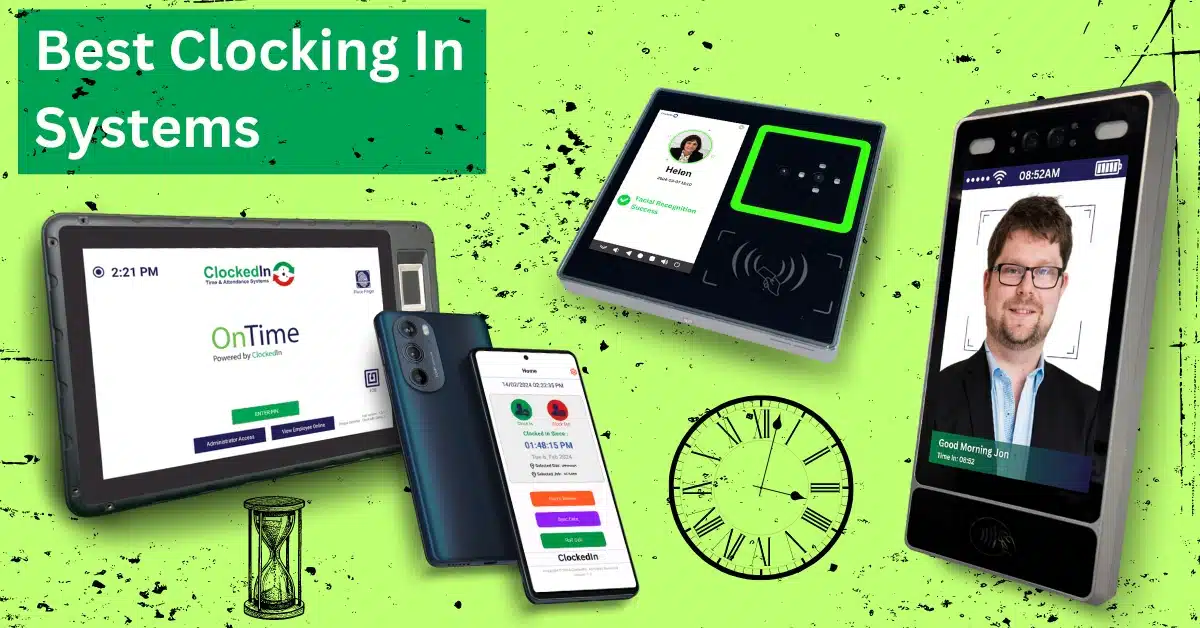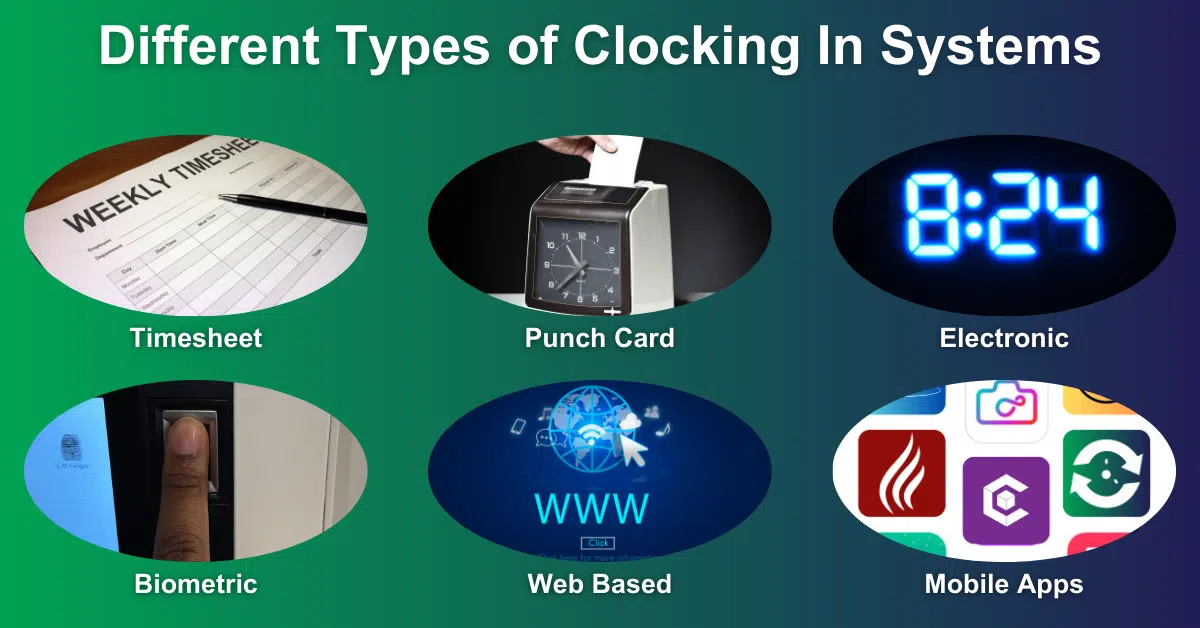In today’s fast-paced business environment, accurately tracking employee hours is more crucial than ever. With the right clocking in system, companies can streamline payroll processes, enhance productivity, and ensure compliance with labour laws. This article dives deep into the world of latest technologies, offering insights into the best clocking in systems available in 2024.

Clocking in systems, at their core, are tools designed to record the start and end times of employees’ work hours. These systems range from traditional pen and paper timesheets to advanced biometric and web-based solutions, each with its unique features and benefits.
Clocking in systems serve as a bridge between employees’ working hours and the payroll department, ensuring that workers are paid accurately for their time. They work by verifying an employee’s identity and recording the time they start and finish work, providing a clear, indisputable record of hours worked.
In today’s business world, the method by which companies track time plays a pivotal role in both operational efficiency and workforce management. Here’s a closer look at the diverse types of clocking in systems available, including manual timesheets and mobile applications, each catering to different needs and workplace environments.
How do manual written timesheets work? Despite the proliferation of digital solutions, some businesses still rely on manual written timesheets where employees record their working hours by hand. This method is highly dependent on the honour system and requires meticulous verification and data entry into payroll systems. While it provides a high level of flexibility, it’s also prone to inaccuracies and time theft.
How do manual time clocks function? Manual time clocks, the traditional punch clocks, operate by having employees insert a card into a machine that then stamps the time of entry and exit. This method, while simple, can be susceptible to errors and instances of buddy punching, where one employee clocks in on behalf of another.
What features do electronic time clocks offer? Moving beyond the limitations of manual clocks, electronic time clocks enable employees to clock in using a card or a personal identification number (PIN). These devices offer a higher degree of accuracy compared to their manual counterparts and can easily integrate with payroll systems, streamlining the payroll process.
Why are biometric systems considered secure? Biometric systems elevate security and accuracy to new levels by using unique biological attributes, such as fingerprints or facial recognition, for employee identification. This approach effectively eliminates the risk of buddy punching, ensuring that time records are as accurate as possible.
How do web-based systems simplify time tracking? Web-based or cloud-based systems offer unparalleled flexibility by allowing employees to clock in from any device with internet access, whether it be a computer, tablet, or smartphone. This adaptability makes them ideal for remote work scenarios, offering real-time data and insights for effective workforce management.
What advantages do mobile applications offer for time tracking? Mobile applications represent the forefront of convenience in time tracking, enabling employees to clock in and out directly from their smartphones. These apps often come with features such as GPS location tracking, photo clock-in verification, and the ability to view schedules or submit time-off requests on the go. They cater especially well to businesses with mobile workforces, offering a seamless and efficient method for managing time and attendance data.

Selecting the right clocking in system for your business is crucial. It’s not just about tracking time; it’s about enhancing operational efficiency, ensuring compliance, and optimising workforce management. Here are the key features to consider when choosing a clocking in system:
As businesses continually seek to optimise operations and enhance workforce management, staying updated with the best clocking in systems becomes imperative. In 2024, several systems stand out for their innovative features, reliability, and user satisfaction. Here’s a look at the top 3 clocking in systems that have been making waves in the industry.
In conclusion, as the world of work continues to evolve, so too does the technology we rely on to manage it. Advanced clocking in systems represent a key component of this evolution, offering businesses the tools they need to manage their workforce with precision, fairness, and efficiency. Embracing these technologies is not just about keeping up with the times; it’s about setting a foundation for success in the increasingly digital and dynamic future of work.
Yes, many modern clocking in systems are designed to integrate seamlessly with other business software, including payroll, HR management systems, and project management tools, to streamline operations and reduce administrative workload.
Mobile clocking in apps typically adhere to strict data protection regulations, such as GDPR, to ensure employee privacy. They use encryption for data transmission and storage, and personal location data is only used for clocking purposes with clear consent.
The cost varies widely depending on the system's complexity, the number of users, and the required hardware. Prices can range from a few pounds per user per month for basic web-based systems to several thousand pounds for advanced biometric systems with comprehensive features.
Yes, there are flexible web-based and mobile app solutions that cater to freelance and contract workers, offering features like project-based time tracking, invoicing, and integration with freelance management platforms.
Many clocking in systems allow businesses to set up time rounding rules, which can round clock-in and clock-out times to the nearest predetermined interval, such as 5 or 15 minutes, to simplify payroll calculations.
Yes, web-based clocking in systems often allow employees to clock in from multiple locations, making them ideal for businesses with multiple offices, remote workers, or field staff.
Some clocking in systems include scheduling features that allow managers to approve shift swaps or scheduling changes directly within the system, updating the clocking records accordingly.
Clocking in systems use a variety of data security measures, including encryption, secure server hosting, regular security audits, and compliance with relevant data protection regulations, to protect sensitive employee and company data.
These systems can be configured to enforce compliance with labour laws by tracking work hours, breaks, overtime, and ensuring that employees are not working beyond legal limits, helping businesses avoid penalties and legal issues.
Yes, most clocking in systems offer comprehensive reporting capabilities, allowing businesses to generate reports on attendance, labour costs, overtime, and other metrics for analysis, auditing, and decision-making purposes.